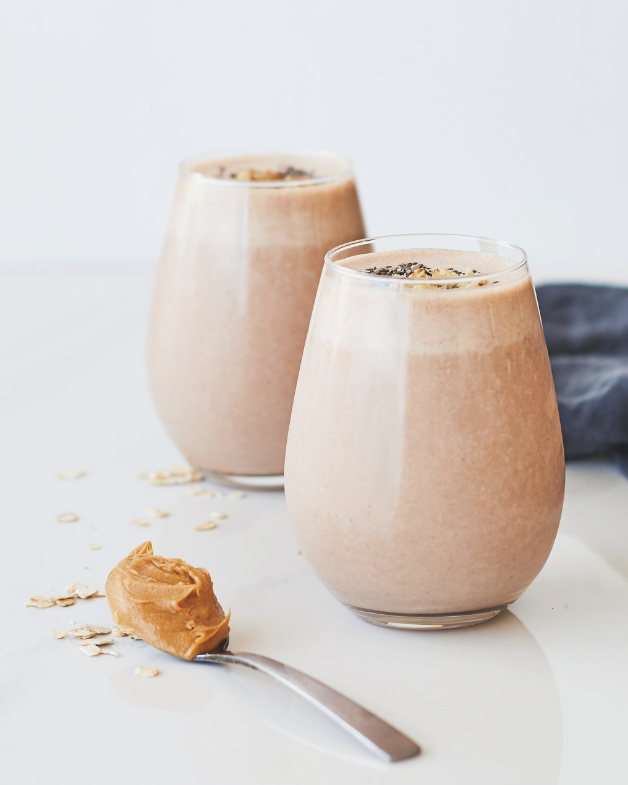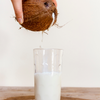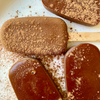How To Make A Smoothie That Helps Leaky Gut (6 Pro Tips From The ‘Best Naturopath In Melbourne’)

Did you know the humble smoothie can help treat Leaky Gut, IBS, SIBO and many other gut conditions?... But only if you’re making them correctly.
You see, all smoothies are not created equal.
Have you ever noticed that you feel a bit yuk after drinking a smoothie, or that your digestive symptoms flare up?
That could be because you’re not aware of the best practices when it comes to gut health and smoothie creation. Thankfully though, my tried and tested pro tips help you understand how to make a gut healing smoothie that helps treat leaky gut syndrome and other digestive issues – and leaves you feeling good afterwards.
Now I’m not one to brag, but a client once called me the ‘Best Naturopath In Melbourne’ after she tried these pro tips herself. Her flattering words made me realise how important it is to get back to basics, and ensure that these gut healing smoothie tips are shared far and wide.
You’re invited to try these 6 pro smoothie tips and see how they affect your gut health.

1.Drink at room temperature
Your body uses digestive enzymes to break down food, and they work best at approx. 37 degrees celsius (your body's natural temperature). This means that drinking a really cold smoothie, e.g. filled with ice or lots of frozen fruit, can create a suboptimal temperature environment for these enzymes to function and digest your food. This common naturopathic philosophy is supported by a Traditional Chinese Medicine belief that excessive cold fluids deplete your digestive heat, which can slow digestion, create bloating and constipation.
2.Add a warming spice
Another way to add ‘warmth’ to your smoothie is by adding warming spices like ginger, cinnamon, turmeric and cayenne (if you’re keen). These therapeutic spices have a thermogenic action and generate a gentle heat in the body to support gut healing in a way that naturally supports digestion and feelings of satiety (1).
3.Keep fruit to a minimum
A great question to ask yourself is, 'How many whole pieces of fruit would I eat in one sitting?'. Whatever the answer is, that’s also the number you want to keep in mind when making your smoothie. Although full of wonderful nutrients and fibre, it’s best to keep fruit as an addition, rather than the base, of your drink to keep your satiety and blood sugar level happy. Personally, I keep it to ½ or 1 whole piece of fruit, depending on its sweetness and what flavour I’m aiming for (2, 3).
4.Sip slowly
Most smoothies are a beautiful mix of healthful ingredients, with many of them being raw. Because of this complexity, remember that your gut will cope better if you sip, rather than skull, your gut healing smoothie (4).
5.Be mindful of fibre
When you blend the fibre from fruits and vegetables into a smoothie, your body still has to digest it. Albeit easier to break down, if you’re experiencing bloating, indigestion and discomfort after your smoothie, it’s worth exploring if you have Leaky Gut Syndrome, Small Intestinal Bacterial Overgrowth or Irritable Bowel Syndrome. If you identify with the symptoms, it's time to reach out to a professional, like myself, to help with the identification, treatment and management process (5).
6.Be mindful of what’s in your smoothie and when you drink it
I'm not one for counting calories, but if you’re looking to lose weight or if you feel better having lighter meals, you need to be mindful of your smoothie ingredients and at what time of day you’re drinking it. It’s super easy to pack a whole lot of food into this innocent (but delicious) drink, and if you’re adding a combination of dried fruit, coconut oil, nuts and seeds, nut butters, avocado, fruits, protein powder or 'superfood' powders to your smoothie, you can easily create a calorie-dense meal. By all means, create a smoothie that keeps you full, but be conscious of how it makes you feel and when you have it e.g. Is it serving as your energy-fuelling breakfast or your 'light' snack?
Bonus Pro Tip: Have vegetables make up a large percentage of your smoothie, as they’re exceptionally nutritious, fibre-rich and don’t necessarily add extra calories.
…And that’s it!
If all of this sounds a bit like ‘smoothie-making science’, that’s because it is.
While these pro tips seem simple enough to implement, it’s deceptive just how much of a difference they can make to your digestion – especially if you’re using smoothies to treat leaky gut and other digestive complaints.
Now I’m not necessarily claiming to be the ‘Best Naturopath in Melbourne’, (even though I’m super proud to have successfully treated an abundance of clients with complex digestive issues over the years), but I am confident that these pro smoothie tips – based on science and traditional medicine approaches - are some of the best you’ll find on the internet.
If you still have trouble drinking smoothies, it's time to check out Bloated to Body Confident. It's the step-by-step strategy for finding your root cause, comprehensive functional and diagnostic testing, personalised dietary advice, holistic support, effective treatments and sustainable solutions, empowering evidence-based information and a clear action plan.

-
Posted in
Recipe





